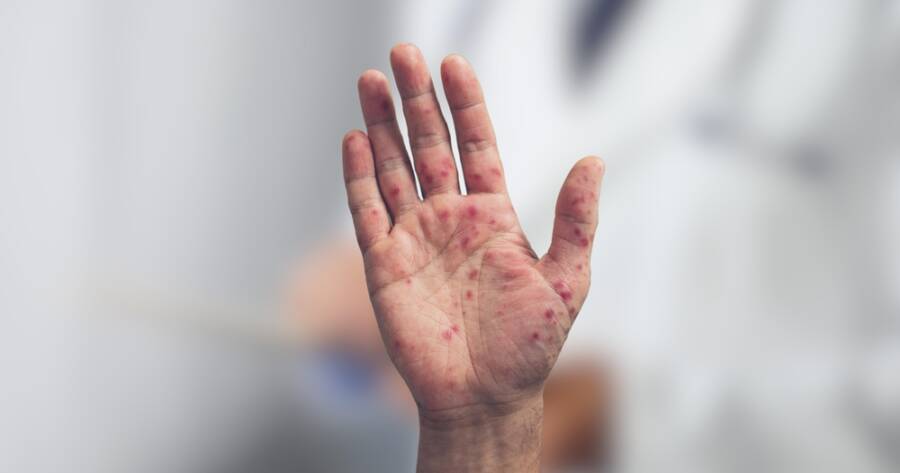Hand, foot and mouth disease (HFMD) isn’t just for kids. Adults can get it, too. If you recognize the common symptoms, you can act fast. Perform a search online today to learn more about HFMD in adults.
By understanding HFMD’s impact on adults, we can better protect ourselves and those around us. Educating ourselves about its transmission and symptoms is the first step in effective prevention and management.
What Is Hand, Foot and Mouth Disease?
Hand, foot and mouth disease (HFMD) is a viral infection that primarily affects children.1 However, it can also occur in adults. The disease is caused by the coxsackievirus, and it spreads through close contact with an infected person’s bodily fluids, such as saliva or mucus. HFMD is characterized by the development of sores or blisters on the hands, feet, and inside the mouth.
5 Symptoms of Hand, Foot and Mouth Disease in Adults
While HFMD is more commonly associated with children, adults can also experience this viral infection. It’s important to be aware of the symptoms so that you can take appropriate action.2 Here are five common symptoms of HFMD in adults:
1. Fever
One of the first signs of HFMD in adults is a fever. The body’s immune response to the viral infection can cause a rise in body temperature. If you experience a sudden onset of fever, it’s important to monitor your symptoms and seek medical attention if necessary.
2. Sore Throat
Adults with HFMD may also experience a sore throat. This can make swallowing difficult and uncomfortable. If you notice persistent throat pain, it’s important to consult a healthcare professional for an accurate diagnosis.
3. Rash
A rash is a common symptom of HFMD in both children and adults. The rash typically appears as small, red spots or blisters on the hands, feet, and sometimes the buttocks. If you notice any unusual skin changes, it’s important to seek medical advice.
4. Fatigue
Feeling excessively tired or fatigued is another symptom of HFMD in adults. The viral infection can take a toll on the body’s energy levels, leading to feelings of exhaustion. If you experience persistent fatigue, it’s important to rest and prioritize self-care.
5. Loss of Appetite
Adults with HFMD may also experience a loss of appetite. The discomfort caused by the sores in the mouth can make eating difficult and unappealing. It’s important to stay hydrated and consume nutritious foods to support your recovery.
Take Control: Your Health, Your Recovery
Understanding the symptoms of HFMD in adults is crucial for early detection and prompt treatment. By recognizing the signs, you can take control of your health and recovery. If you suspect you may have HFMD, it’s important to consult a healthcare professional for an accurate diagnosis and appropriate care.
Managing Symptoms of HFMD at Home
When infected with HFMD, managing symptoms at home is vital for comfort and recovery. Over-the-counter pain relievers can alleviate discomfort from sores and fever. To soothe mouth ulcers, try saltwater rinses. Stay hydrated with water and avoid acidic or spicy foods that can aggravate mouth sores. Rest is crucial; allow your body time to recover. Remember, these home remedies are supportive and not a substitute for professional medical advice if symptoms persist or worsen.
Complications and Risks Associated with HFMD in Adults
While hand, foot, and mouth disease is typically mild, adults can face complications. These may include viral meningitis, a condition where the virus inflames the membranes around the brain and spinal cord. Dehydration is another risk, especially if painful mouth sores discourage fluid intake. In rare cases, adults can develop encephalitis, an inflammation of the brain. Pregnant women should be particularly cautious as HFMD may impact fetal health. It’s important to monitor symptoms and seek medical advice if they worsen.
Preventative Measures for HFMD in Adults
Preventing the spread of hand, foot, and mouth disease (HFMD) is essential, especially for adults in close contact with children. Good hygiene is key. Regularly wash your hands with soap, especially after changing diapers or using the restroom. Avoid close contact with those infected. Disinfect frequently touched surfaces in your home and workplace. Since HFMD spreads through bodily fluids, avoid sharing utensils or personal items. By taking these preventative steps, you can significantly reduce your risk of contracting HFMD.
Why You Should Learn More About HFMD in Adults
Hand, foot, and mouth disease, while more common in children, poses a real risk to adults. Awareness and early recognition of symptoms are critical for prompt treatment and recovery. Adopting preventative measures, such as practicing good hygiene and minimizing close contact with infected individuals, can greatly reduce the risk of contracting HFMD.
Understanding how to manage symptoms at home and when to seek medical attention ensures that adults can navigate this illness effectively. HFMD, though often mild, should not be underestimated, especially in adults who may experience more severe symptoms or complications. Online research and staying vigilant are key to maintaining health and well-being in the face of HFMD.
